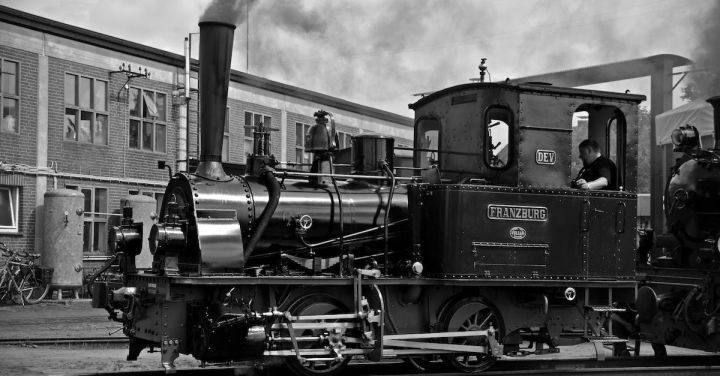Steam locomotives, with their majestic presence and raw power, were once the kings of the railway. These magnificent machines, fueled by burning coal and water, played a crucial role in shaping the industrial revolution and transforming the way people traveled. Although their reign has long ended, their grandeur and legacy continue to captivate the imagination of train enthusiasts and historians alike.
The steam locomotive era spanned from the early 19th century to the mid-20th century, and during this time, these iron horses dominated the railway landscape. With their billowing smokestacks and rhythmic chugging, they symbolized progress and adventure. Their intricate mechanics and engineering brilliance made them marvels of technology, and their distinctive whistles echoed through the countryside, announcing their arrival in grand fashion.
One cannot talk about steam locomotives without mentioning their iconic design. The massive boiler, adorned with brass fittings and gauges, housed a furnace where coal was burned to produce steam. This steam was then directed to powerful pistons, which drove the large steel wheels, propelling the locomotive forward. The intricate network of valves, rods, and gears made these machines a mechanical masterpiece, an engineering marvel that is still revered today.
Steam locomotives were not just powerful workhorses; they were also symbols of luxury and elegance. The opulent passenger cars attached to these locomotives provided a comfortable and stylish mode of transportation. From plush seats to ornate interiors, traveling by steam locomotive was a truly remarkable experience. The dining cars offered delectable meals, and the observation cars provided breathtaking views of the passing landscapes. The allure of steam locomotives extended beyond their functionality; they represented a certain romanticism and a sense of adventure.
The steam locomotive era was not without its challenges. The constant need for coal and water made them inefficient and costly to operate. The advent of diesel and electric locomotives in the mid-20th century signaled the end of the steam era. These new technologies were more efficient, cleaner, and easier to maintain. Steam locomotives slowly disappeared from the tracks, replaced by their modern counterparts. However, their legacy lives on through preservation efforts and the passion of steam enthusiasts.
Today, there are still a few places where one can witness the grandeur of steam locomotives. Historic railway museums and heritage train rides offer a glimpse into the past. These meticulously restored locomotives, with their polished brass and gleaming paintwork, take visitors on a nostalgic journey, reliving the golden age of rail travel. The sound of the steam whistle, the hiss of the steam, and the rhythmic chugging transport visitors back in time, allowing them to experience the magic of steam locomotives firsthand.
The steam locomotive era may be a thing of the past, but its impact on society and transportation cannot be overstated. These iron giants revolutionized the way goods and people were transported, connecting cities and shaping nations. They brought people closer together, transcending distance and time. The legacy of steam locomotives is a testament to human ingenuity and the spirit of innovation.
In conclusion, steam locomotives were more than just machines; they were symbols of power, elegance, and adventure. Their grandeur continues to captivate the imagination, and their legacy lives on through the efforts of preservationists and enthusiasts. Reliving the steam locomotive era allows us to appreciate the remarkable engineering feats of the past and reminds us of the importance of preserving history. So, the next time you hear the distant sound of a steam whistle, take a moment to relive the grandeur of these magnificent machines.
